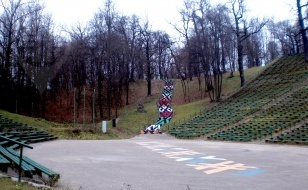
K.
*K. Laurinaitytė: *I remember Dainų Slėnis since I was six, because this was when I started singing in the choir and participating in the Song Festivals. I have been spending time here since childhood, so this place seems so natural and maybe even commonplace, yet pleasant.
Read moreRobertas Antinis: Orbita was a superb club. It was special.
Read more
Dobrė: “The action was held in November 1941: at 6 pm we were lined up.
*Dobrė*: “The action was held in November 1941: at 6 pm we were lined up. Our line, where my aunt, my grandmother and I were standing, was checked only after dark. At the time, I was ill, covered in boils, and for that reason I looked very tired, and my grandmother as well. Only my aunt was able to work. A Jew officer came to us, he was a friend of my father, which is why he let us go to the „good side” and we were not condemned to die. Everyone was amazed; it was a gift from God to us.”
Read moreRimantas Viedrynaitis: “I was born in Kaunas, the Jewish Hospital.
*Rimantas Viedrynaitis:* “I was born in Kaunas, the Jewish Hospital. It is sad that it does not look good right now. It is in front of the Seminary of Priests and Kaunas Castle. That building has a very interesting history: it was a Jewish hospital, and it was a brothel during the war and later a maternity ward, where women would tease the priests with naked breasts. I don't know, I feel some emotional connection to that place.” (2014)
Read more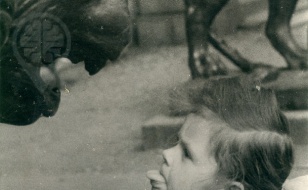
Rimantas: “This photo of my daughter Edita is taken in 1963, when she was 3.5-years-old.
*Rimantas*: “This photo of my daughter Edita is taken in 1963, when she was 3.5-years-old. I liked taking photos since my very childhood, we used to visit the garden in front of the Museum of War quite often, and this was where I captured her photo teasing the lions. I was working in a special scientific workshop, where various architectural and historic monuments were restored. Among many preserved architectural monuments in Lithuania, I also contributed to the repair of facades and interior of M. K. Čiurlionis National Art Museum and Museum of War. Your initiative inspired me to browse old photo archives. While looking for this photo, I looked through photos and slides featuring the construction of the Open-Air Museum of Lithuania, restoration of the Town Hall and Town Hall (Rotušės) Square, as well as reconstruction of The House of Perkūnas, the spire of Vytautas Magnus Church and many other monuments. Thus, I immersed into memories...” (2018)
Read more
Asija: “When the family got too big, we received a room in Laisvės Ave.
*Asija*: “When the family got too big, we received a room in Laisvės Ave. 1A (currently Laisvės Ave. 3). The apartment had 5 rooms, each housing a different family. The rooms were separated by glass doors. Each side followed their own way of living. This “transparent’’ life continued for a long time, as covering the doors or building a wall were not affordable. Those doors made the apartment authentic and beautiful.”
Read more
Gercas: "Basically, all amateur activities had to go through a selection process.
*Gercas:* "Basically, all amateur activities had to go through a selection process. There had to be songs in Russian and Lithuanian. Amateur activities were allowed, but I am almost completely sure that there were people infiltrated in them as well. Director Judelis Rondaris decided to create a drama in Jewish language (Yiddish) and he needed people who new Jewish (Yiddish). I could speak it quite well and I liked acting. The play was called “Shalom Aleichem”. We were envied by dancers and singers, because they wanted to sing and dance more. They met our drama with hostility, but residents of Kaunas liked it very much. Our audience was not only Jewish, but also Lithuanian and of mixed families. There are quite a few mixed families among us." (2018)
Read more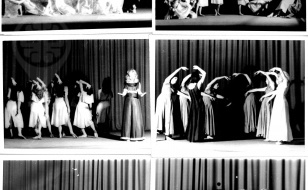
Liucija and Daiva: "Sonata" was an integral part of our youthful life, just like lessons, it was the same with dancing.
*Liucija and Daiva*: "Sonata" was an integral part of our youthful life, just like lessons, it was the same with dancing. I remember, during Čiurlionis' 100th commemoration, we have been traveling Lithuania with a performance. We were fifteen. We would get back late at night, and ran home from Panemunė bridge, while our frightened mothers waited at the stairwells with their nightgowns on. Next day – back to school, we go there - and get in trouble, because we are wearing makeup. No matter if we‘ve tried to clean that terrible smelly makeup, it would remain...
Read more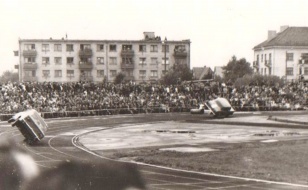
Gintaras: Žalgiris Stadium was not only a place of sports events; people were also interested in the shows by stunt drivers from Czechoslovakia.
*Gintaras: *Žalgiris Stadium was not only a place of sports events; people were also interested in the shows by stunt drivers from Czechoslovakia. You can only imagine how running tracks looked after their performances. :) The Soviet government took interest not only in the health of the sportsmen, but sophisticated pastime of the audience as well: next to the stadium (and in a lot of other places in the city), there were glass pavilions with drink vending machines. Here people could chat and discuss episodes from the matches and their results. Fifty kopeks and a glass of cheap wine called rašalas (‘ink, a derogatory term for cheap, poor quality wine) would quickly relax not only the tongue but brain as well... This place to get drunk has been replaced by a Hesburger restaurant, and instead of the stadium, there is MOLAS Shopping Mall. :) (2014)
Read more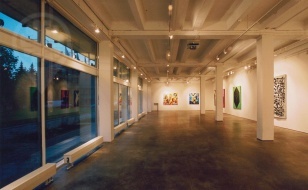
Riddle for our website visitors:What place is this?
*Riddle for our website visitors:*
Read more
Svetlana: “I was living in Siberia and came to Lithuania from Irkutsk when I was 32 years old.
Svetlana: “I was living in Siberia and came to Lithuania from Irkutsk when I was 32 years old. My husband is a Lithuanian exile, I met him in Siberia. I taught physical education at Linksmakalnis and Išlaužas schools. We taught in Russian. Only later we have switched to Lithuanian. My kids were taking classes in Linksmakalnis. The area of the town was blocked. Iron and concrete blocks were placed at the entrance. Ponds were excavated. As we passed through, we would see bones and skulls. I couldn't say that something secret had happened here. An ordinary intelligence. Employed military officers with technological education. Watching, listening, encrypting. They were looking for some information they had needed. Would make selections. In cases they couldn‘t decrypt it – would send it to Moscow. There were rumours – there was a rocket here. That they were suppressing American broadcasts. There was no such thing. We had never felt like this was a military town, like we were isolated. I remember how we would go out for picnics with my children. The barracks were where the ruins are now. Which had a sauna, a sanitary unit. When the unrest began, the soldiers were transferred to another house of exiles. The moving of soldiers was rather quiet and beautiful.” (2019)
Read more
„Ne kiek to baisiausio žmonijos istorijoj karo Tadas ir beprisimena – keli paveikslai, ir tie neaišku, ar paties prisiminimai, ar vėliau išgirsti žmonių pasakojimai, pavirtę prisiminimais, keli pablukę vaizdai: vienas iš Kauno, antras iš Vilniaus, trečiasis iš Veprių.
„Ne kiek to baisiausio žmonijos istorijoj karo Tadas ir beprisimena – keli paveikslai, ir tie neaišku, ar paties prisiminimai, ar vėliau išgirsti žmonių pasakojimai, pavirtę prisiminimais, keli pablukę vaizdai: vienas iš Kauno, antras iš Vilniaus, trečiasis iš Veprių. 1938 metais gimęs, trijų ketverių penkerių metų bamblys – kas gi tokio peliuko galvoj galėjo įstrigti? Ugnis? Sprogimas? Gaisrų pašvaistės? Ir vis dėlto šį tą prisimena: ant aukšto kalno – minia žmonių, visi tyli, visi žiūri į žemumą, į tolimą duobę, kurioje kažkas liepsnoja, virsta dūmais, bet neįžvelgsi kas (dabar Tadas jau žino: tai liepsnojo Kauno Slabados rajonas, vokiečių paverstas getu ir sudegintas, tame priemiesčio kampe glaudėsi ir jo tėvų namelis, o tie ant aukšto kalno stovintys žmonės, tos raudančios moterys – tai Slabados gyventojai, išvaryti iš savųjų gūžtų kaip stovi – visiems jiems teko viską pradėti nuo pradžios: ir butelius susirasti, ir baldelius susikalti, ir vėl iš naujo išmokti gyventi, mylėtis, daryti vaikus, o laikui bėgant ir vagiliauti, ir apgaudinėti), tik kruvina pašvaistė ant žmonių veidų, kruvinos kibirkštys raudančių moterų ašarose“.
Read moreSITES OF MEMORY
1 Projects 114 12 Routes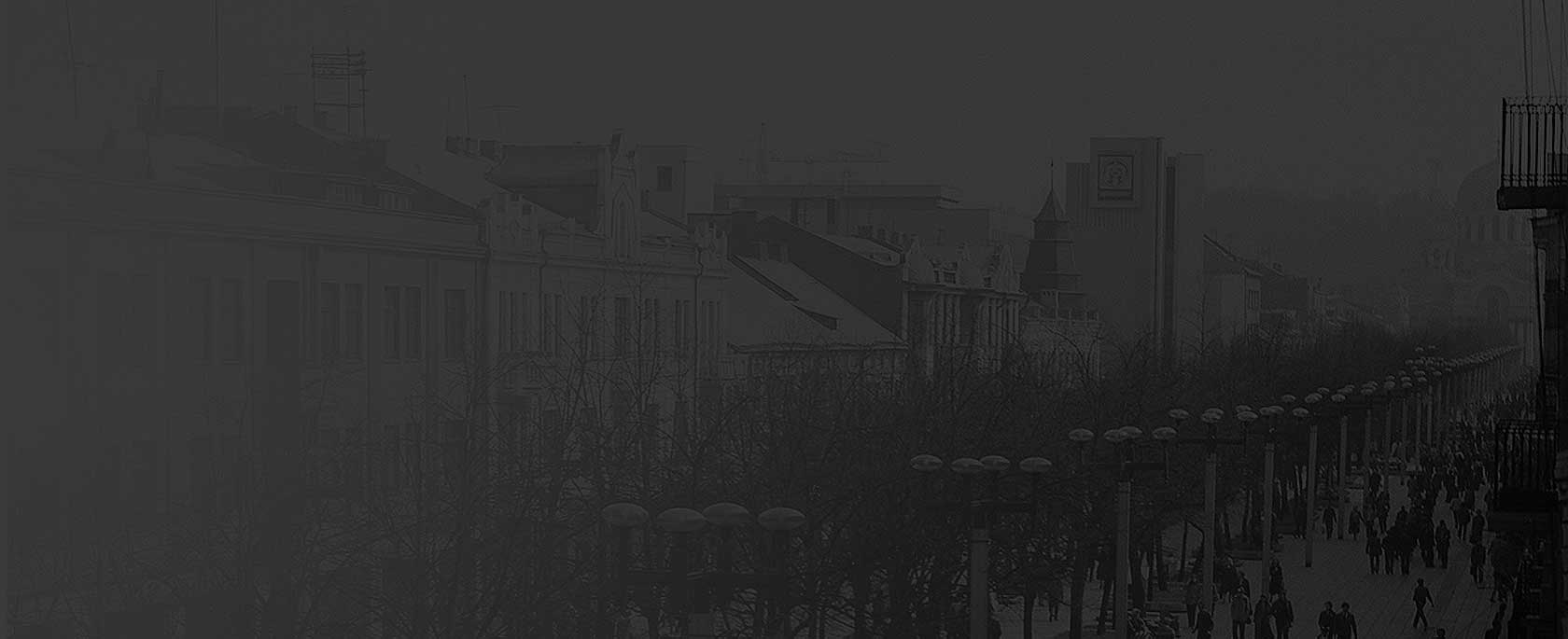
Our memory is framed by spatial reference points: places, sites, buildings, and streets give us our bearings and enable us to anchor and order our memories. So, the material alteration of these places can lead to the substantial modification of our memories, and even their disappearance.Post your memory here